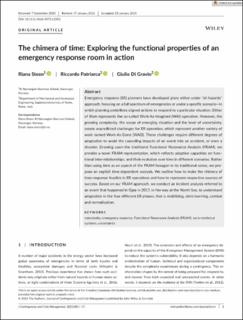| dc.description.abstract | Emergency response (ER) planners have developed plans either under "all-hazards" approach, focusing on a full spectrum of emergencies or under a specific scenario—in which planning underlines aligned actions to respond to a particular situation. Either of them represents the so-called Work-As-Imagined (WAI) operation. However, the growing complexity, the scope of emerging situation and the level of uncertainty, create unpredicted challenges for ER operation, which represent another variety of work named Work-As-Done (WAD). These challenges require different degrees of adaptation to avoid the cascading impacts of an event into an accident, or even a disaster. Drawing upon the traditional Functional Resonance Analysis (FRAM), we provide a novel FRAM representation, which reflects adaptive capacities on functional inter-relationships, and their evolution over time in different scenarios. Rather than using time as an aspect of the FRAM hexagon in its traditional sense, we propose an explicit time-dependent analysis. We outline how to make the chimera of time response feasible in ER operations and how to represent respective sources of success. Based on our FRAM approach, we conduct an incident analysis referred to an event that happened in Gjøa in 2017, in Norway at the North Sea, to understand adaptation in the four different ER phases, that is mobilizing, alert/warning, combat and normalization. | en_US |

